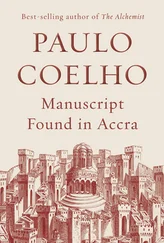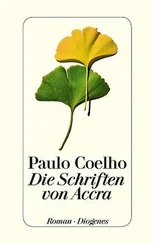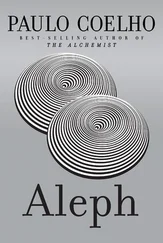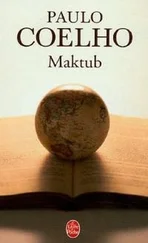A detailed review of the literature surrounding fictocriticism and its predecessors shows that there are terms that exist in other countries that have a suggestive fictocritical air about them. In Japan there is Shishōsetsu or the ‘I-novel’, a confessional form of writing that promoted transparency and textual interconnectivity between writer, narrator and narrative hero in early twentieth-century Japanese fiction (Layoun 158). Shishōsetsu encouraged authorial presence and ‘sincerity’, just as fictocriticism encourages authorial involvement and engagement in its ‘storytelling’ form (Layoun 159).
In the writing of Québecoise women there is fiction-theory or fiction-théorique, as seen in the works of Nicole Brossard—someone who “has had considerable impact on the development of creative-critical writing in English Canada”, having influence in the development of a “very specific creative-critical style” on the margins of Canadian culture (Flavell 215).
Paul Dawson, an Australian academic, in “A Place for the Space Between: Fictocriticism and the University” (2002), states that the North American version of fictocriticism would be called “confessional criticism” (145):
confessional criticism is … indebted to the post-structuralist critique of critical and philosophical modes of writing as metalanguages, and the subsequent rejection of the epistemological relationship between these modes and an unquestionable truth. If the disinterested and impersonal prose of academic writing can no longer provide access to knowledge, then the intellectual as political subject becomes the only enabling motivation of critical activity. (Dawson 145)
Essentially, both confessional criticism and fictocriticism aim to distance and liberate criticism from its “parasitical dependence on literature” (Dawson 146).
There is also “autocritique, the new belletrism, experimental critical writing, narrative criticism, and literary non-fiction” (Flavell 106). Autocritique is a complicated form of self-criticism—a “trendy ‘I’ that beams out at the reader from the ‘personal’ critical essay” (Flavell 274). The new belletrism is another conceptualisation of autobiographical criticism identifying “American ficto-critical moves as a return to an earlier form of the essay (before its appropriation as an academic genre and reincarnation as logical formal writing)” (Flavell 108). Experimental critical writing has been best summed up and expressed by Marianna Torgovnick:
When writers want to be read they have to be more flexible and take more chances than the standard scholarly style allows: often, they have to be more direct and more personal. In a very real way … I could not think myself as a writer until I risked exposing myself in my writing. I am not talking here, necessarily, about full-scale autobiographical writing—though I am not ruling it out either. But I am saying that writerly writing is personal writing, whether or not it is autobiographical. Even if it offers no facts from the writer’s life, or offers just hints of them here and there, it makes the reader know some things about the writer—a fundamental condition, it seems to me, of any real act of communication. (25-27)
Narrative criticism is a formula of narrativity used to tell a story (Walker 559). And literary non-fiction is “the inclusion of a personal voice into a book of non-fiction” (Flavell 26).
Other possible influences on fictocriticism include gonzo, travel writing, writing-between and beatnik novels, some of which continue to (re)appear and exist today. There is also evidence of the incorporation of experimental, personalised or fictive writing in academic disciplines such as:
cultural and literary studies, film studies, performance studies, law, history, philosophy, visual arts, and even beyond the humanities into some areas of the sciences. A View from the Divide: Creative Nonfiction on Health and Science (1999), for example, suggests that even the most purely scientific and objective disciplines are not immune to the ficto-critical turn. (Flavell 104-5)
In 2007, Denis Byrne’s Surface Collection: Archaeological Travels in Southeast Asia, an archaeological travelogue, told through stories in the first-person, was published. This further demonstrates the emergence of fictocriticism in different disciplines, bridging discourses and creating new approaches to writing in the way ‘straight’ informal theory or ‘normal’ fiction cannot do. Here is an example from Byrne’s book:
Standing at the window of the second-floor room in the National Museum where I was reading through piles of old reports and archaeological site records, I could see, looking across a stream of traffic and a dusty park, a corner of the Spanish wall and the confusion of rooftops and low facades that lay beyond it. There, in 1571, Miguel Lopez de Legazpi had laid out a gridiron of seventeen streets on the site of what had been the palisaded fort of Rajah Suleiman. The Rajah’s small brass cannons, while perfectly adequate under previous conditions, were little more than a joke to the Spanish, and they easily drove him out of his stronghold. Intramuros’s defenses were elaborated and modified over time to produce a system of immense stone walls complete with moat, seven gates, several bastions and ravelins, and a large fort in the northwest corner guarding the river mouth. (1-2)
All the foregoing discussion shows that a kind of fictocriticism can both fall into, under (and evade) a plethora of different categories, and at present there does not appear to be a unified, cohesive accepted understanding of the form.
Fictocriticism was first taken up in Australia in the 1990s, stemming from Canada (Flavell 3-4). “Anna Gibbs reminds us that [fictocriticism] appears well before this in the writing of mostly non-academic women responding to the new and ‘provocative’ texts emanating from France then later Canada from the 1970s onward” (147). Fictocriticism’s emergence in Australia is thought to have been prompted by way of “French feminist interest in a new kind of writing defiant of phallocentrism” (147). Some of this French feminist experimental writing is often referred to as écriture féminine (Hancox and Muller 148).
The first article to have the term ‘fictocriticism’ appear in it in Australia was Stephen Muecke and Noel King’s “On Ficto-Criticism” in 1991 in the Australian Book Review. Muecke and King’s tentative two-page article acts as a discussion—even a somewhat casual conversation—between the two academics, in curiously trying to decipher what type of writing much of Roland Barthes’ work, such as Mythologies (1957), Roland Barthes (1975) and A Lover’s Discourse (1977), and Don DeLillo’s novel White Noise (1985) actually are. Muecke and King claim that Roland Barthes’ texts “simply cannot be called criticism, but [they] cannot, for that matter be called non-criticism either” (14). And that White Noise is “at once a quite traditional novel (in terms of structure) and yet one of the sharpest meditations on the postmodern available” (Muecke and King 13). Thus, they emphatically decide on the possibilities of fictocriticism as a postmodern way “to simply [tell] stories” (Muecke and King 13), and as a relief from heavy theory. They even disregard the need for systematically accurate referencing at the end of the article, claiming “No need for bio details—they’re in the text, but also we want readers to be a little uncertain about our reality” (Muecke and King 14). Overall, the article paints fictocriticism as providing a refreshingly non-convoluted, un-bureaucratic perspective on the possibilities of (academic) writing in a way that is still rich, provocative and engaging.
Читать дальше




